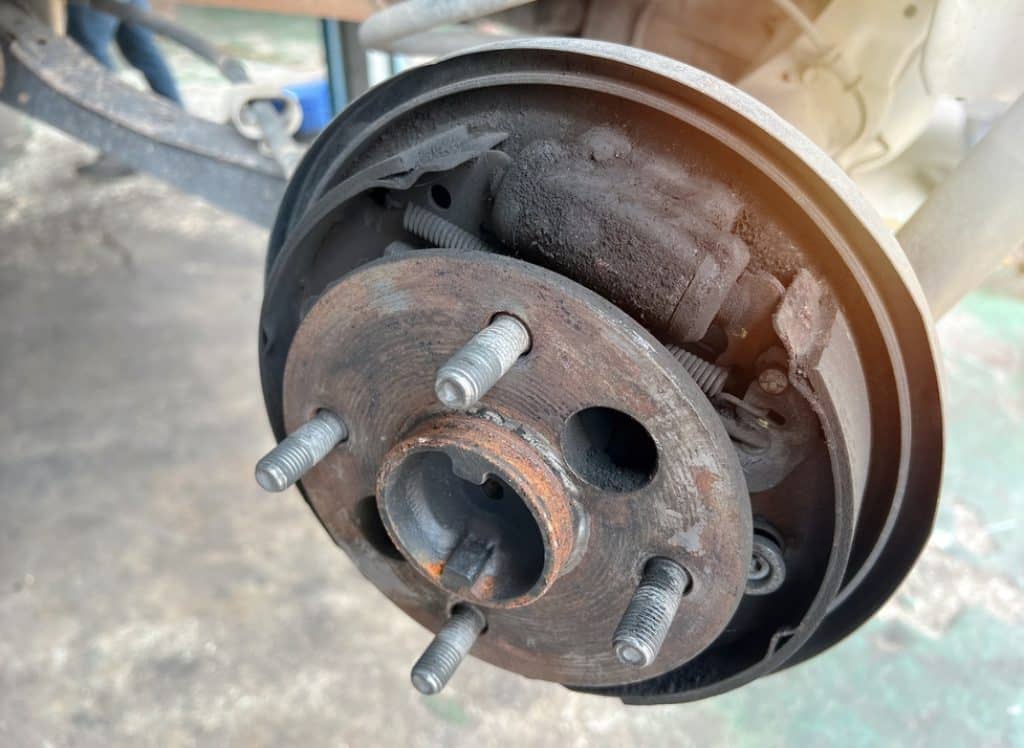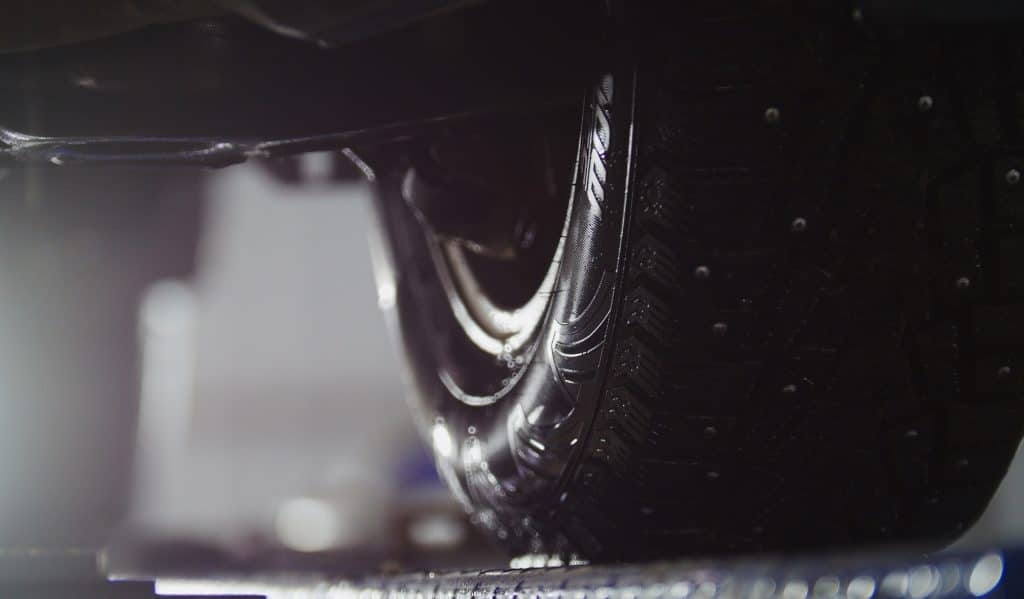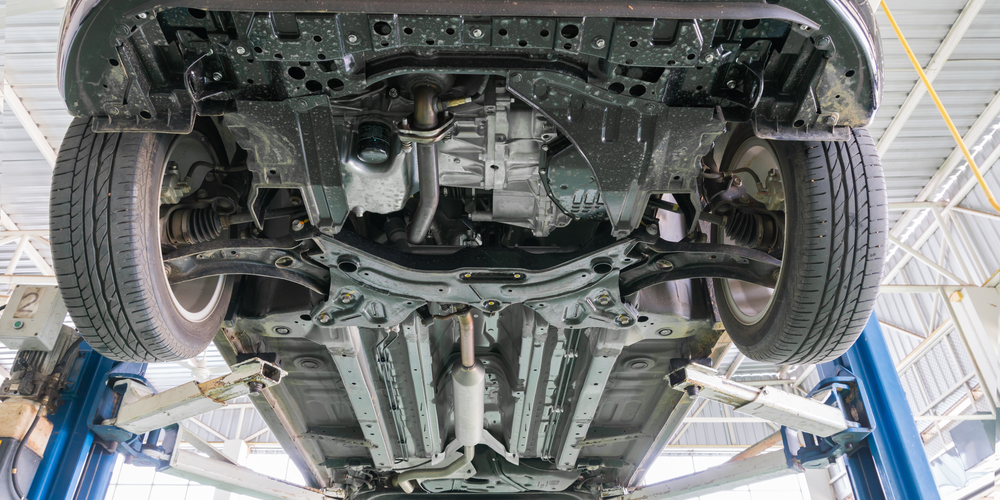How Long Drum Brakes Last On Average?

Drum brakes typically have a service life of about 150,000 to 200,000 miles. Shoes, on the other hand, usually last around 30,000 to 50,000 Miles.
However, this range is influenced by factors such as driving habits, vehicle type, and environmental conditions.
Frequent, heavy braking can reduce lifespan, while conservative driving can extend it.
Maintenance is crucial to ensure maximum longevity. Regular inspections, usually conducted during tire rotations, can identify wear early.
When your vehicle’s brakes are professionally serviced, the components are cleaned and adjusted, which can help prolong their lifespan.
What Makes Drums Wear Out Faster Than Normal?

Several factors can accelerate the wear and tear of your drum brakes, leading to more frequent replacements.
Driving Habits: If you frequently stop abruptly or ride the brakes, especially when driving downhill, your drum brakes will wear out more quickly. Constant pressure generates excessive heat, which contributes to faster deterioration of the components.
Environmental Conditions: Exposure to corrosive materials such as road salt and chemicals can damage drum brakes. Additionally, driving through deep puddles or flood conditions can lead to premature wear when water and grit enter the brake assembly.
- Poor Maintenance: Neglecting regular brake inspections and fluid changes increases the risk of brake component failure. Without checking, brake shoe adjustment and replacement intervals might be missed.
- Quality of Brake Materials: Lower-quality brake shoes and drums may wear out faster than those made from higher-quality, more durable materials. Always opt for reputable brands when choosing replacement parts.
- Overloading the Vehicle: Carrying heavy loads or towing beyond your vehicle’s recommended capacity puts an additional strain on the braking system. This can lead to overheated components and quicker wear.
Use the following table to monitor potential issues:
| Issue | Consequence |
|---|---|
| Aggressive braking | Increased wear on shoes and drums |
| Poor maintenance | Shorter lifespan of brake components |
| Inferior parts | Faster degradation and replacement |
| Direct exposure to harsh elements | Corrosion and damage to the drum brake system |
| Consistent overloading | Overheating and compromised structural integrity |
Being aware of these factors will help you maintain your drum brakes in optimal condition for as long as possible.
How To Extend The Life Of Drum Brakes

Maintaining your drum brakes properly can significantly increase their lifespan. Regular inspection and timely maintenance are key.
1. Periodic Inspection: Schedule inspections for your drum brakes every 6 months. Look for signs of wear, such as deep grooves or scoring on the drum surface.
- Brake Shoe Condition: Check the thickness of the brake linings. If they’re worn down to less than 1/16 inch, it’s time for replacement.
- Drum Wear: Examine the drum for signs of wear. If necessary, have them resurfaced or replaced to maintain proper brake function.
2. Driving Habits:
- Gentle Braking: Apply brakes gently rather than sudden stopping to reduce the rate of wear.
- Coasting: Whenever possible, coast to a stop to minimize brake use and extend their lifespan.
3. Avoid Overloading: Keep the vehicle’s load within its rated capacity. Excess weight puts additional strain on your brake system, leading to faster wear.
4. Brake Fluid: Ensure you have the correct level of brake fluid. Replace it according to the manufacturer’s recommendations to prevent contamination that can cause damage.
5. Professional Servicing: Have your brakes inspected and serviced by a professional mechanic. They have the tools and expertise to detect issues that you may overlook.
How Much Does The Typical Drum Brake Cost?
The cost of drum brakes varies based on the vehicle type, with prices generally differing between cars and trucks due to size and material differences.
For A Car?
When you need to replace drum brakes on a car, the parts alone typically range from $30 to $100 per drum. Labor costs can add $50 to $150 per axle, depending on the local labor rates and the complexity of the job.
These values are general estimates and may vary by location and specific vehicle model.
For A Truck?
For trucks, drum brakes often cost more due to their larger size and the heavier-duty materials required. On average, the price for the parts ranges from $50 to $150 per drum. You should expect labor costs to be in the region of $100 to $200 per axle.
Just like with cars, the particular model of the truck and hourly labor charges can influence the total replacement cost.
How To Replace Drums And Shoes Yourself
When replacing drum brakes and shoes, safety is your priority. Ensure your vehicle is on a flat surface and use wheel chocks to secure it.
Gather the necessary tools: a jack, jack stands, brake cleaner, a lug wrench, a screwdriver, a hammer, and pliers.
Step 1: Prepare Your Vehicle
- Park on a level surface and engage the parking brake.
- Loosen the lug nuts on the rear wheels.
- Jack the car up and place it securely on jack stands.
- Remove the wheels to access the brake drum.
Step 2: Remove the Drum
- Locate and remove the drum retaining screws or clips if present.
- If the drum is stuck, spray brake cleaner and tap lightly with a hammer to loosen.
- Pull the drum off the wheel hub.
Step 3: Replace the Shoes
- Note the arrangement of springs and shoes before disassembly.
- Remove the retaining springs and clips using pliers.
- Carefully take out the old brake shoes.
- Install the new shoes, ensuring you mirror the original configuration.
- Reattach springs and clips properly.
Step 4: Reassemble and Test
- After replacing the shoes, reattach the drum.
- Put the wheel back on and lower the vehicle.
- Torque the lug nuts to the manufacturer’s specifications.
- Perform a series of slow, safe stops to ensure proper brake operation.



